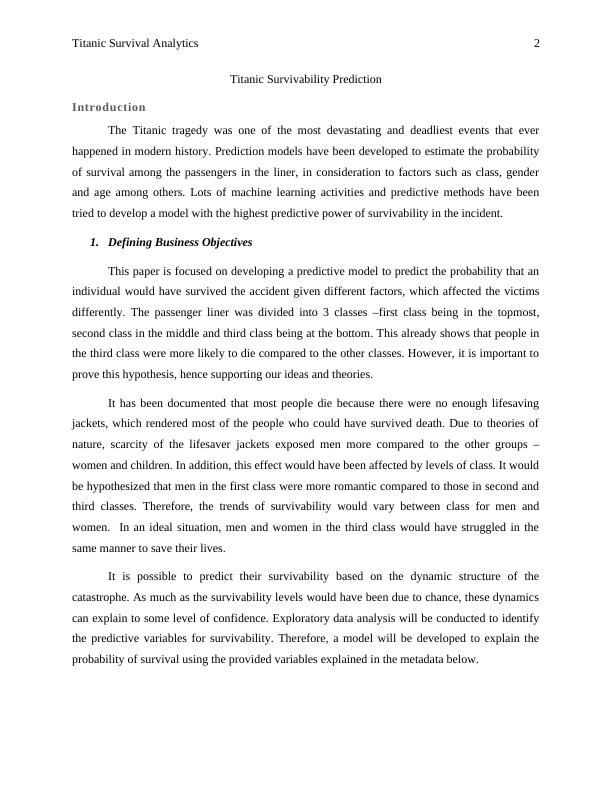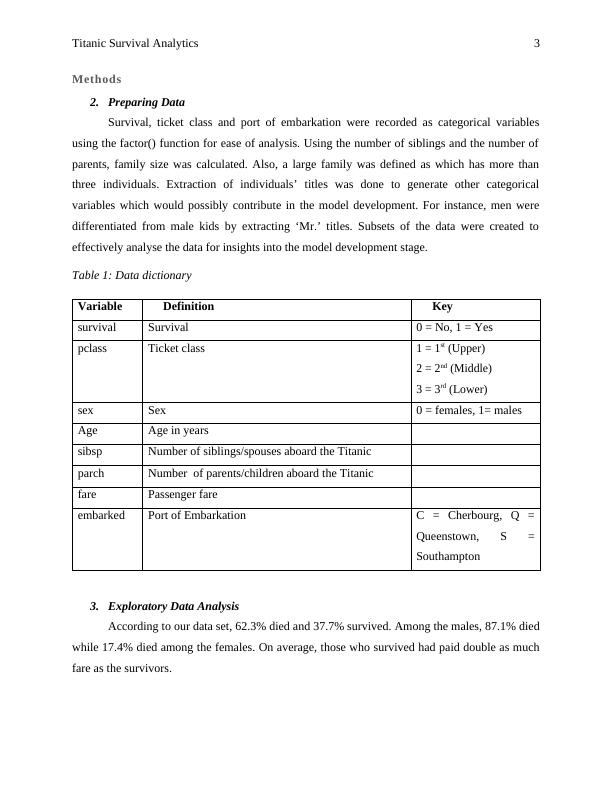Titanic Survival Analytics
Predicting Titanic Survivors in a Business Analytics Project Report
10 Pages2102 Words471 Views
Added on 2023-06-03
About This Document
This paper is focused on developing a predictive model to predict the probability that an individual would have survived the accident given different factors, which affected the victims differently. Explore the data, prepare it, and develop a logistic model to predict the survivability. Validate the model and predict the results.
Titanic Survival Analytics
Predicting Titanic Survivors in a Business Analytics Project Report
Added on 2023-06-03
ShareRelated Documents
End of preview
Want to access all the pages? Upload your documents or become a member.
Titanic Survivability Prediction - Doc
|11
|1948
|132
Analysis of Titanic Datasets
|15
|3119
|313
Predictive Modelling Solve a Business Problem - PDF
|28
|3064
|13
Titanic: Machine Learning from Disaster
|4
|506
|325
Data Mining - Desklib
|20
|4415
|262



